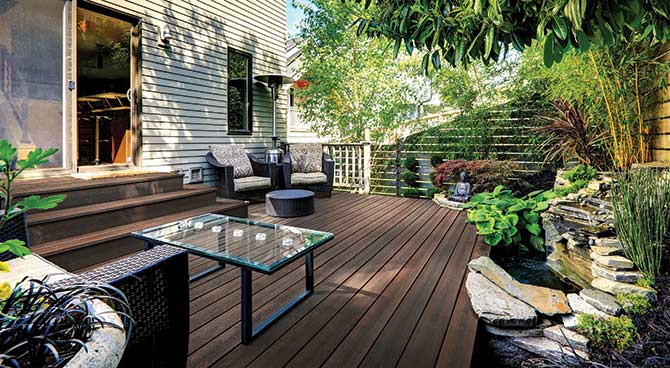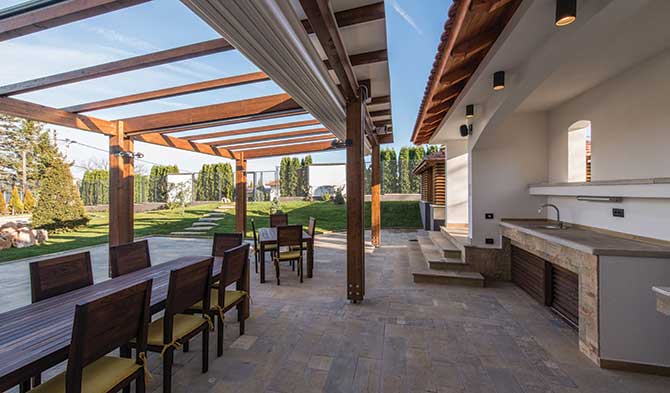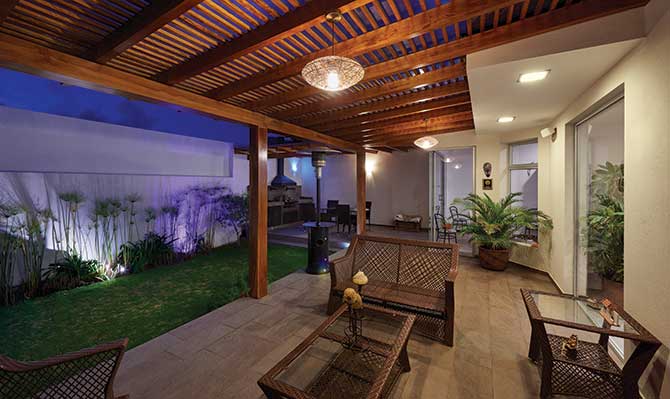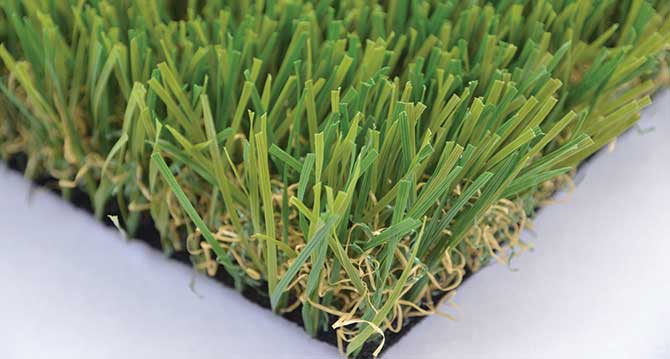Experts point to an emphasis on natural materials and eco-friendly practices influencing today’s backyards and gardens.
The amenities found in the typical backyard have changed over the past 15 years from a focus on children’s recreational equipment such as swing sets and slides to hardy duplications of decorative interior furnishings strong enough to withstand nature’s elements.
Hardscapes To counteract the high stress pace of today’s lifestyles and the depletion of natural resources, installing low-maintenance gardens with drought-tolerant plants and less turf grass is becoming a common practice. In addition, there is a grow-it-yourself movement that has led to the development of vegetable gardens (perhaps modeled after Michelle Obama’s White House edible garden). Water features – such as fountains and ponds – have become popular, along with pergolas and arbors to provide shade.

Lighting: According to a report from the National Hardware Show, lighting is becoming an important feature of outdoor spaces. Whether it’s illuminating key architectural or landscaping accents, adding a level of security or safety, or providing ambience for entertaining areas, outdoor lighting is now high on the list for many consumers.
According to a Houzz.com survey of 4,500 users, 7 in 10 homeowners are illuminating their hardscaping. The survey also found that the majority are making eco-friendly choices for their yards, noting, “Of the two-thirds of homeowners who are updating the lighting in their yard (65 percent), a majority is going green with LED (58 percent) and solar-powered lights (56 percent). Homeowners in rural neighborhoods are most likely to choose solar-powered lighting.”
Kitchen Appliances: While barbecues are nothing new to summer entertaining, the expanse of grilling spaces and appliances continues to increase with each passing year as outdoor kitchens gain in popularity. Barbecues are just the start; lately smokers and pizza ovens have become sought-after additions to outdoor kitchens, along with exterior-grade appliances such as multiple cooking surfaces, refrigerators, sinks, ice machines, beer taps, fire pits, and outdoor heaters as well as integrated audio-visual equipment and Wi-Fi accessibility.

Color Blocking: Garden Design magazine noted that the fashion trend for color blocking is now finding its way outdoors. The magazine quoted Annette Gutierrez, co-owner of Potted in Los Angeles as observing many color blocked patio walls. “It’s about framing or highlighting a specific plant or area,” she said, explaining that color on a wall could be used to frame a row of potted plants or serve as a backdrop to an outdoor sofa.
In the absence of a wall, Gutierrez suggested using a solid color outdoor rug or porch curtains to create the effect.
Decorative Furniture: Forget about the plastic/vinyl feel and look of typical outdoor cushions. Today’s outdoor furniture features a variety of materials such as wood, cast aluminum, wicker, and PVC in styles that rival their indoor counterparts. Complementing these aesthetics is the wide assortment of attractive outdoor area rugs that allow consumers to personalize their outdoor spaces to create a custom look.

Natural Materials: According to Garden Design magazine, “After years of minimalist dominance in hardscaping materials, furniture, and décor, designers are noticing renewed interest in natural materials and a less geometric style.” Designer Julie Blakeslee at Big Red Sun in Austin, Texas, told Garden Design, “Rather than clean and modern, clients are asking for a more old-fashioned, more DIY look in their gardens. We’ve been using railway ties, free-form decks, smaller outdoor furniture, and swing seating. I think clients are looking for something more authentic and real. People may be yearning for something more organic in their gardens.”
Richard Hartlage of Seattle-based Land Morphology told Garden Design that he sees a heightened interest in natural, tactile materials like wood and stone for the built elements of a garden. “People are moving away from concrete unless it’s an ultra-modern, minimalist garden,” he says.
Not Your Father’s Lawn: Lawn alternatives – synthetic grass and artificial turf – are being explored by more homeowners than in the past, whether for convenience sake or out of concern to limit pesticide and fertilizer use where children and pets play. Lawn experts and garden designers note that these artificial products are looking more realistic than ever, which has also increased its appeal.

Active Play Spaces : With children spending an alarming amount of their free-time glued to their smartphones and tablets, it’s understandable that parents today are seeking ways to have their children play outside as they had done growing up.
According to Garden Design magazine, consumers are interested in “active play
spaces” for their families. “I’ve had an uptick in requests for play and entertaining spaces,” Tacoma, Wa.-based designer Sue Goetz of Creative Gardener told the magazine. “Bocce courts, dog and pet spaces, dining areas, fireplaces, hammocks; people don’t want places they have to weed. They want places where they can relax and play.”
Susan Morrison, author and designer at Creative Exteriors Landscape Design in East Bay, Calif., told Garden Design that game courts for adults and families are popular. “Most of my clients don’t have room for a regulation bocce court,” she said, “but I have done petanque courts and recently got a request for a cornhole court. Yes, there is a regulation size for cornhole!”
Keep It Local: It’s not just restaurant cuisine with locally grown food that is appealing to consumers today. They are seeking the same sensibility in their yards and gardens. This has led to a rise in interest for native and endemic plants.






2 thoughts on “Top 2017 Trends In Outdoor Living”